
This blog post breaks down how buds form, how branches reveal key patterns, and how both work together to tell you what tree you’re looking at. It’s a practical guide to tree identification by buds, using real-life examples like red maple, magnolia, and cottonwood to show you exactly what to look for. Let’s get started!
How Buds and Branches Work Together in Tree Identification?
Buds and branches always go hand in hand. A bud is never floating alone. It grows directly from the branch, and its size, color, shape, and even position are shaped by how that branch is built. That’s why observing just the bud without considering the branch often leads to confusion.
One of the most valuable clues for tree identification by buds is how the buds are arranged along the twig. You’ll see two common patterns:
- In some trees, like the red maple, buds grow in opposite pairs — one on each side of the twig at the same level.
- In others, like the cottonwood, buds are alternate, meaning they appear one at a time, switching sides as you move down the branch.
Next, consider the overall branching style of the tree. Some trees have a dense, wide-spreading form (what we call a branchy tree). These trees naturally expose more of their twigs and buds, making them easier to study up close. Trees like the forest pansy redbud or whitebud often have this type of structure.
Finally, let’s talk about pruning. Sometimes, when people cut branches of trees, it unintentionally makes identification easier. Fresh cuts often reveal inner twigs and unopened buds that were hidden inside the canopy.
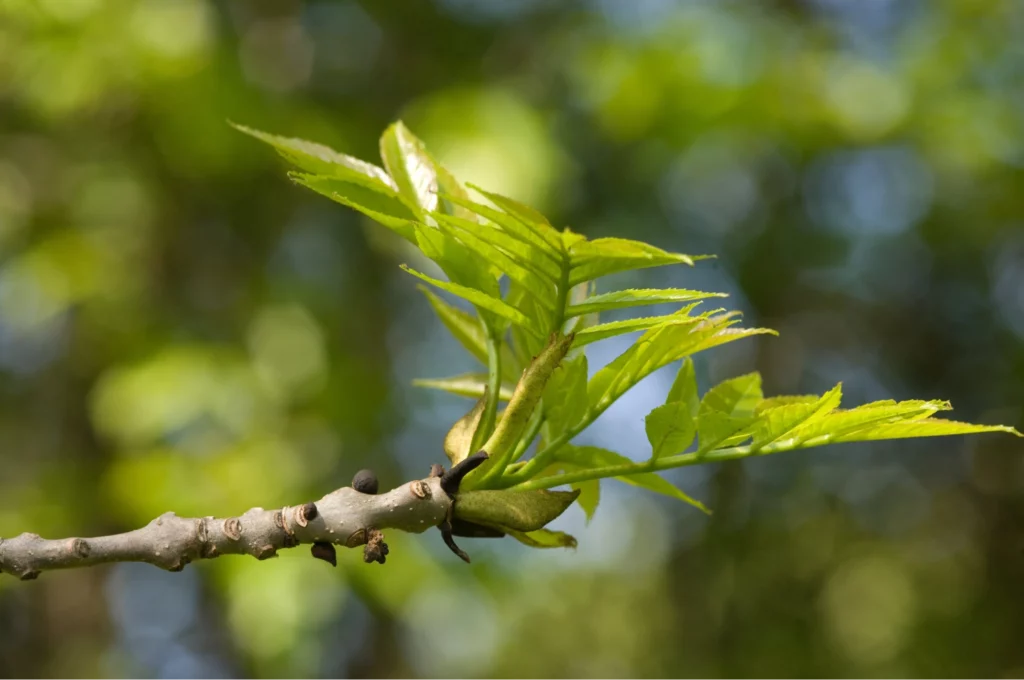
Bud Basics: Traits to Look For
If you want to get better at tree identification by buds and branches, the first step is learning what kinds of buds to look for and what details matter. Not all buds are the same. Some will grow into leaves, others into flowers, and some into both. That’s why understanding bud types is just as important as noticing their shape or color. Start by recognizing the two main types of buds:
- Leaf buds are usually smaller and contain the next season’s foliage.
- Flower buds are often rounder or plumper and will bloom in spring.
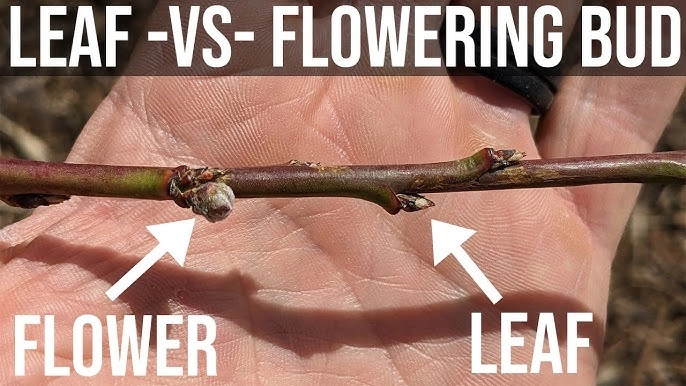
You’ll also notice where the buds grow on the twig.
- Terminal buds are found at the very tip of a branch and often control the direction of growth.
- Lateral buds grow along the sides and may appear singly or in clusters, depending on the species.
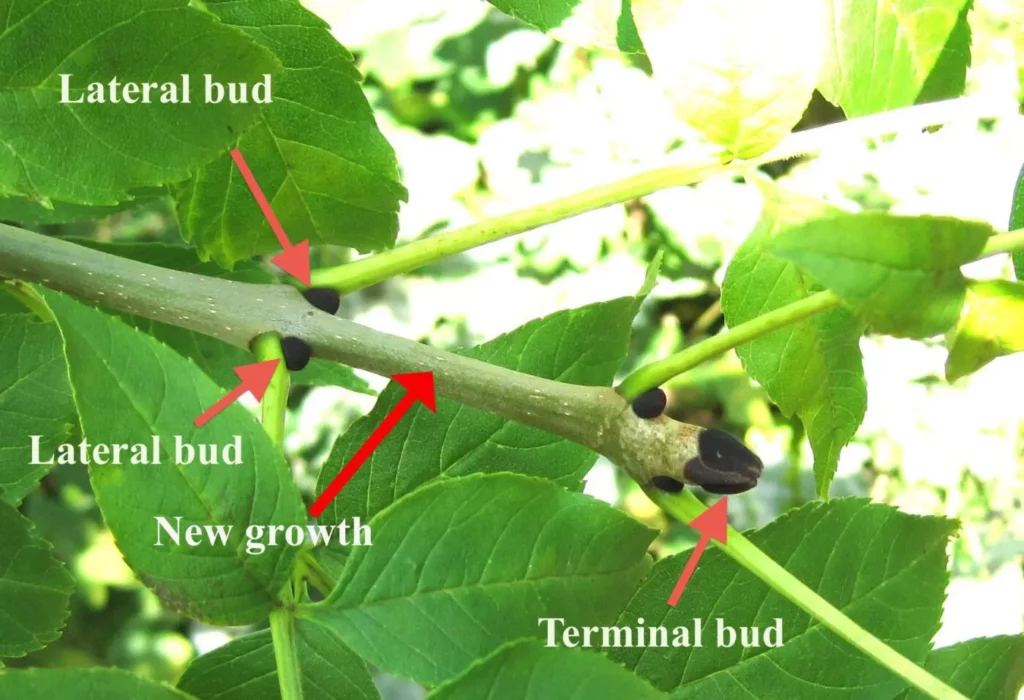
Once you know what type of bud you’re seeing, focus on 3 key traits:
- Color — Buds come in a range of natural tones that can signal the tree’s species or health.
- Texture — Some feel smooth or waxy, while others are dry, rough, or slightly fuzzy.
- Shape — Buds may be rounded, sharply pointed, or cone-like, and their shape is often consistent within the same tree species.
To truly appreciate these features, you may need to get up close. A phone camera or a simple magnifier can help you capture those tiny details.
Branch Details: Supporting Clues for Accurate ID
Buds don’t appear in a vacuum. They grow along twigs and branches, and those branches offer valuable clues for identification. When you’re doing tree identification by buds and branches, paying attention to the structure and surface of the branch can give you the context you need to identify a tree more accurately.
1. What to Observe on a Branch?
To begin, examine the branch or twig that supports the buds closely. These are the key features to focus on:
- Branch color: This can range from green to reddish to dark brown, depending on the tree species and age of the growth.
- Bark texture: Some young branches are smooth, while others may be rough, flaky, or patterned.
- Lenticels: These tiny pores appear as dots or lines and help the branch exchange gases. Their presence and shape vary between species.
- Scars and thickness: Leaf scars (from where leaves used to be) and the thickness of the twig give clues about the tree’s age and growth habits.
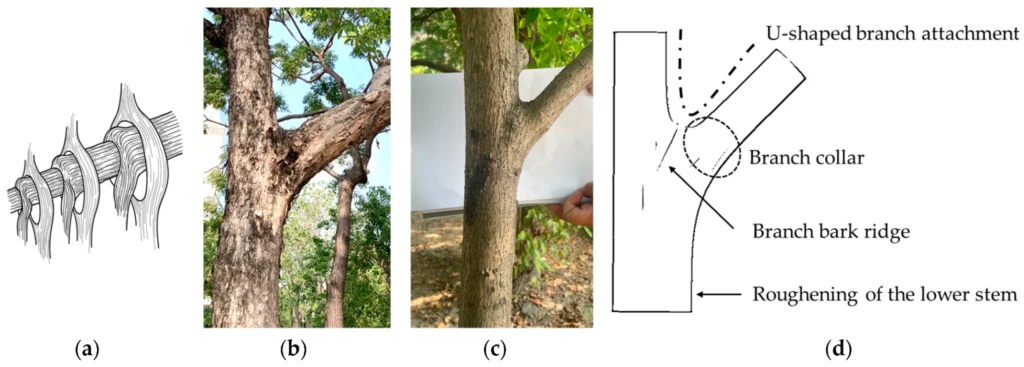
2. Why Branch Shape and Form Also Matter?
Beyond surface details, the overall form of the branch tells you something, too. A tree with dense, spreading twigs (often called a branchy tree) will give you more visible buds to examine. The way branches grow (upright, zigzag, curved) also affects where and how buds appear.
3. Species with Distinctive Branch Traits
Some trees are beneficial to study because their branches have unique identifying features:
- Plum branches are smooth and tend to show bud clusters near short spurs.
- Lemon tree buds often grow near short, sharp thorns on slender twigs.
- Bonsai redbuds, shaped by pruning, have zigzag or miniature branches, but their bud patterns still reflect natural growth.
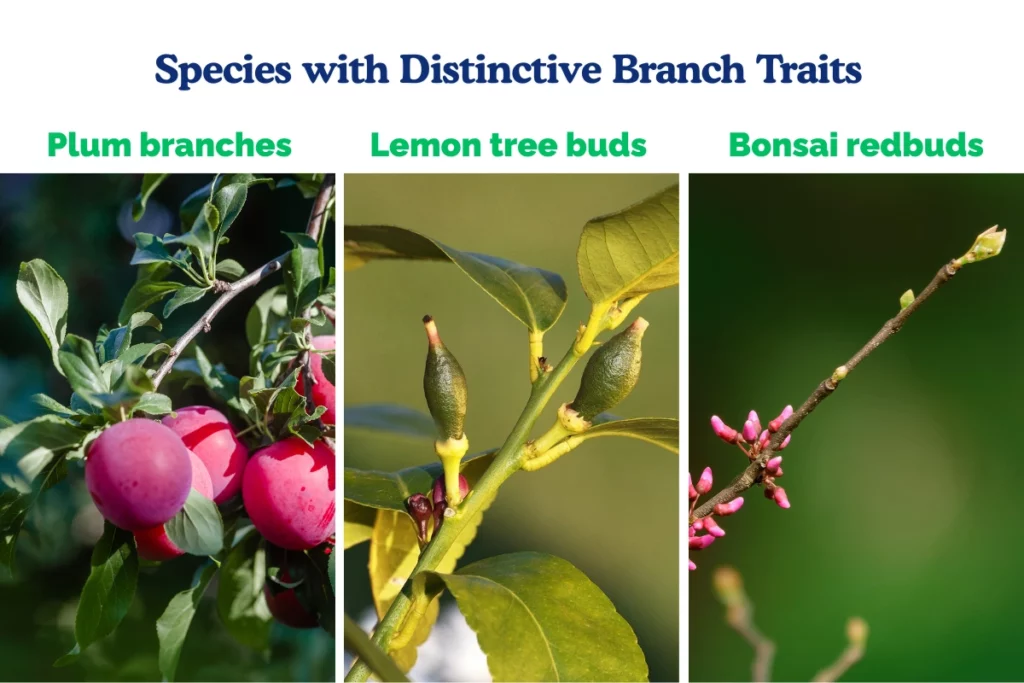
4. How Pruning Can Reveal Useful Clues
Sometimes, freshly cut or trimmed branches are the easiest to examine. Whether it’s from seasonal pruning or storm damage, removing branches from trees can expose bud patterns that were otherwise hidden. If you come across a fallen twig or a cut branch, take the opportunity to look at it closely. It may provide a clear view of both the bud arrangement and the underlying branch structure.
How to Spot Different Trees by Bud and Branch Pairings?
Each tree species has a distinct pattern: how its buds form, where they’re placed, and what the branches look like beneath them. When you’re practicing tree identification by buds and branches, these pairings offer some of the most consistent visual clues, especially in leafless seasons. Below are key species that show how this method works in the field.
Forest Pansy Redbud Tree, Bonsai Redbud, and Whitebud
All members of the Cercis genus are known for their distinctive zigzag twig structure, which creates an irregular yet predictable bud pattern. The twigs often appear deep red or purplish, especially in younger growth, and have a somewhat flattened look at the nodes.
Buds are small, rounded, and tend to grow in clusters near leaf scars, sometimes appearing directly on older wood — a trait called cauliflory, seen in redbuds. In bonsai forms, the tight internodes and forced shape make these patterns even more visible.
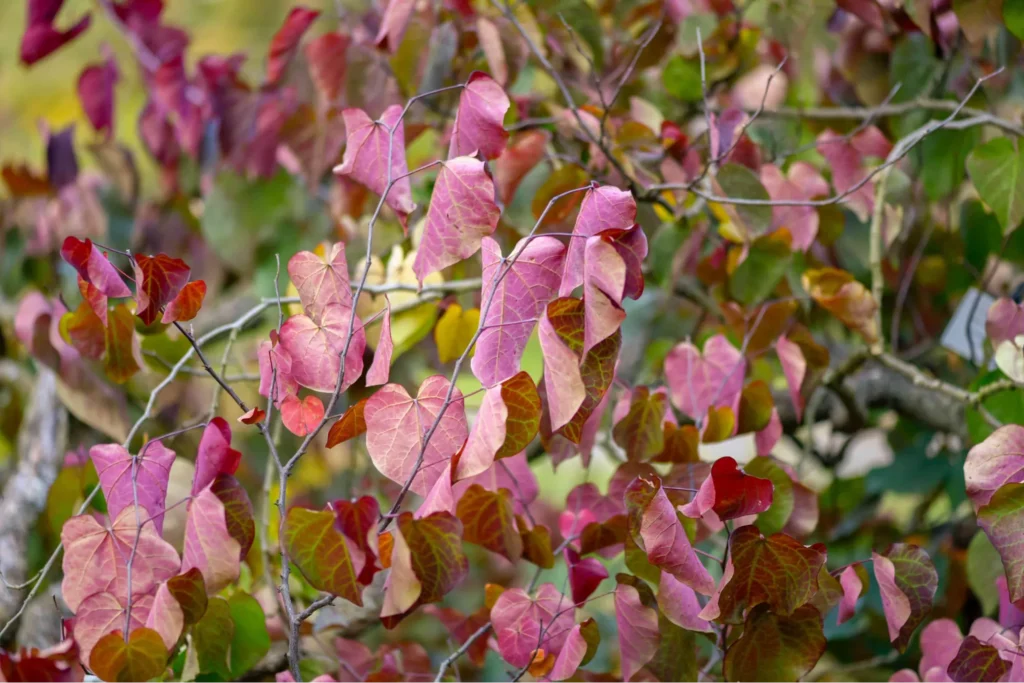
Cottonwood (Populus deltoides)
Cottonwoods produce some of the largest buds of any native tree in North America. These resin-coated, pointed buds are arranged alternately and are often sticky to the touch due to protective bud scales secreting balsamic resin. They are a textbook example used in tree identification by buds.
Twigs are thick, shiny, and tan to dark brown, with clearly visible leaf scars shaped like a crescent beneath each bud. These scars often exhibit bundle scars, which are tiny dots within the scar that indicate vascular connections. This is a classic case where the buds’ size and spacing reflect the tree’s rapid annual growth.
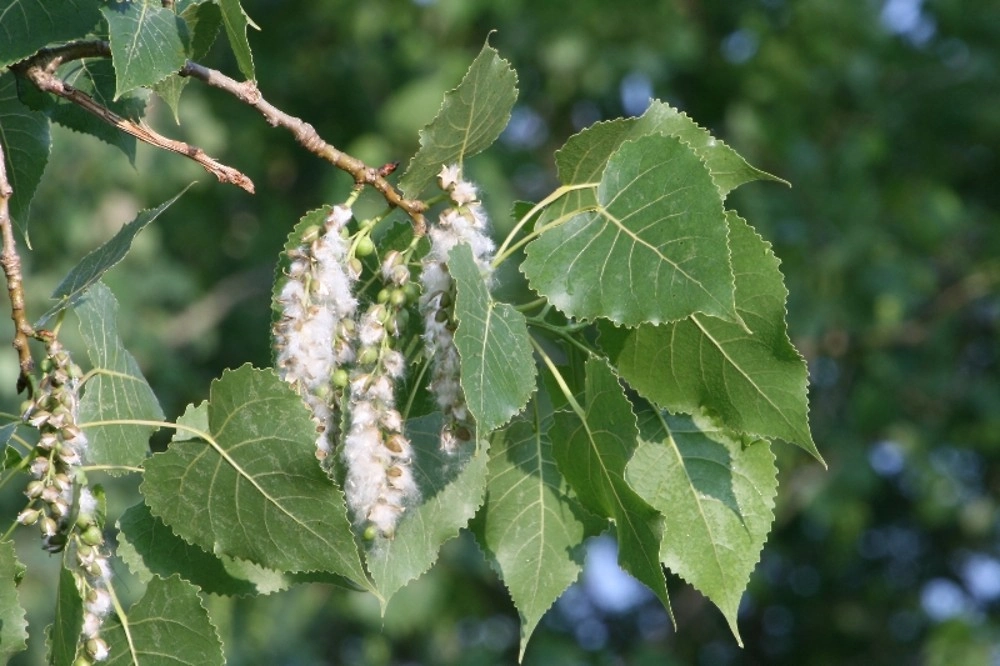
Magnolia (Magnolia spp.)
Most deciduous magnolias have enlarged, fuzzy flower buds that are oval or egg-shaped, with a soft, felt-like coating. These buds form early and overwinter until the spring bloom, making them easily recognizable.
The branches are stout, smooth, and often gray or light brown, with well-spaced buds that tend to sit singly at the ends of twigs. Lateral buds may be present, but are typically smaller. This clear contrast between flower and leaf buds, plus the unique texture, gives magnolia its reliable ID profile.
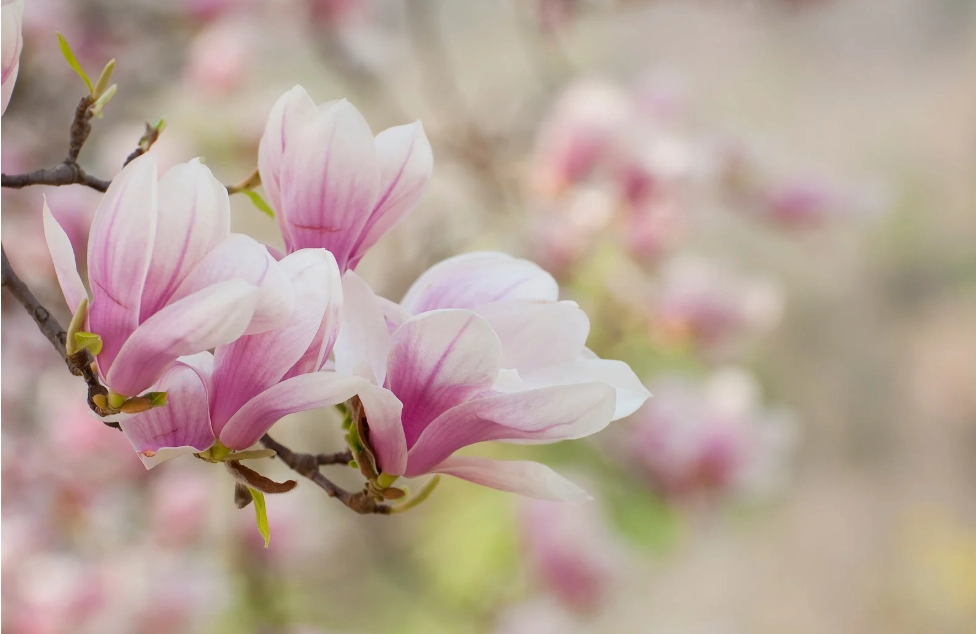
Red Maple (Acer rubrum)
This is a textbook example of opposite bud arrangement, where lateral buds form directly across from each other. Buds are small, blunt, and red to reddish-brown. They often appear in triads: a central terminal bud flanked by two lateral buds.
Twigs are slender, often gray or reddish, with smooth bark and clearly defined opposite leaf scars. The consistency of this pattern is one of the most reliable indicators that you’re looking at a maple species.
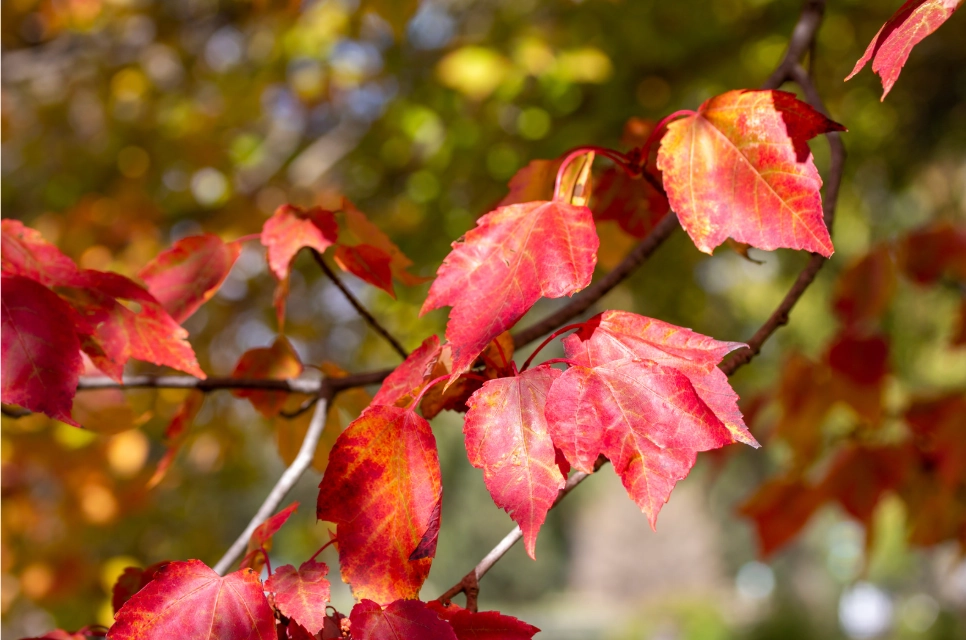
Lemon Tree (Citrus limon)
Unlike temperate hardwoods, lemon trees retain leaves year-round but still form axillary buds near nodes and thorns. Buds are smooth, small, and tend to blend in with the glossy green twigs.
Branches are green and flexible when young, with scattered sharp spines: a key identifying feature. This makes lemon trees a more challenging case in tree identification by buds. Buds may appear near fruit nodes and are often hidden beneath leaves or branch forks, requiring close observation. Lemon trees don’t follow the same seasonal patterns, so look for subtle node structure rather than noticeable swelling.
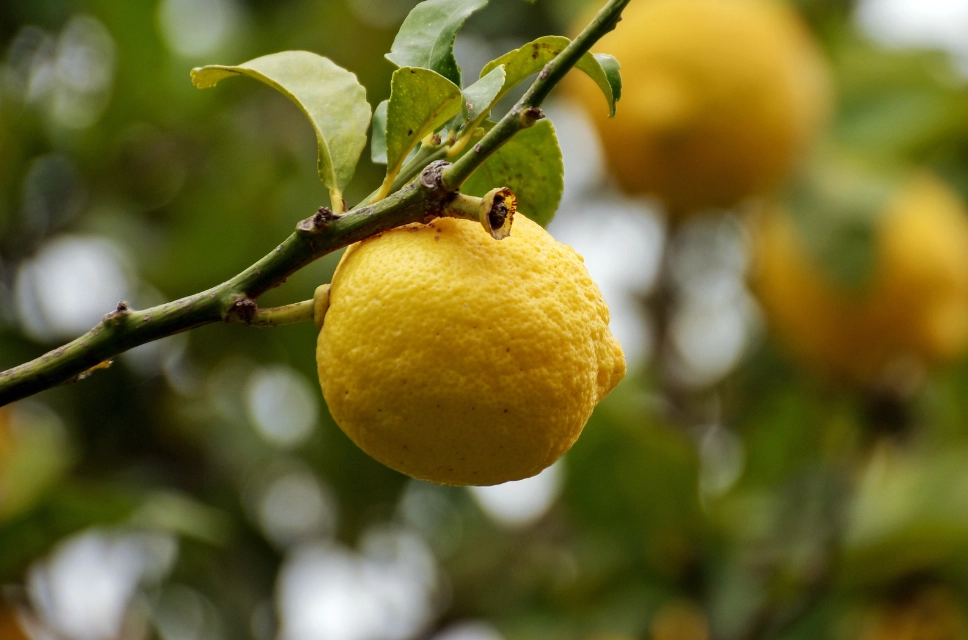
Plum Tree (Prunus domestica and relatives)
Plum trees feature short fruiting spurs, where multiple buds (leaf and flower) may cluster together. These grow on older wood, and the branch bark is often smooth with a reddish or purplish tone.
You’ll also see distinct lenticels (horizontal pores), along with narrow leaf scars. Buds tend to be rounded and plump, especially if they’re flower-producing. Their location on short, stubby branches gives plums a unique winter profile.
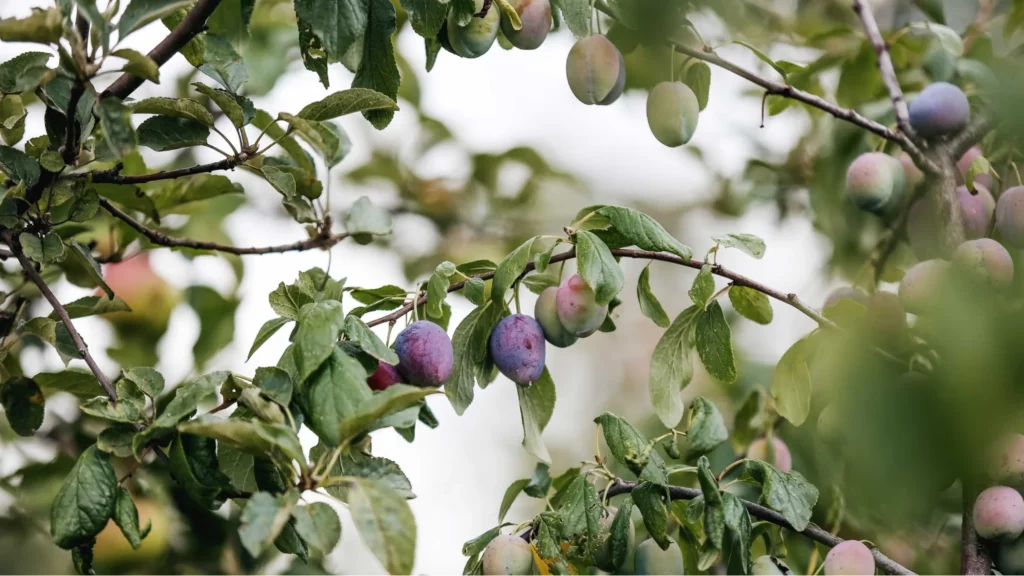
How Does Cutting a Branch Help with Tree Identification?
Cutting a branch can reveal details that are otherwise hidden in the canopy or too high to examine. A freshly cut twig gives you clear access to buds, bark texture, and growth patterns. All of which are essential for tree identification by buds and branches.
How to Use a Cut Branch for Closer Observation?
- Pick a healthy, recently cut twig. Avoid dry or overly thick branches. Younger twigs show buds more clearly.
- Look at the bud arrangement. See whether the buds grow in opposite pairs or alternate along the branch.
- Examine surface features. Note the color of the twig, bark texture, presence of lenticels, and any leaf scars.
- Check for multiple bud types. Some twigs show both flower and leaf buds. Knowing the difference can improve accuracy.
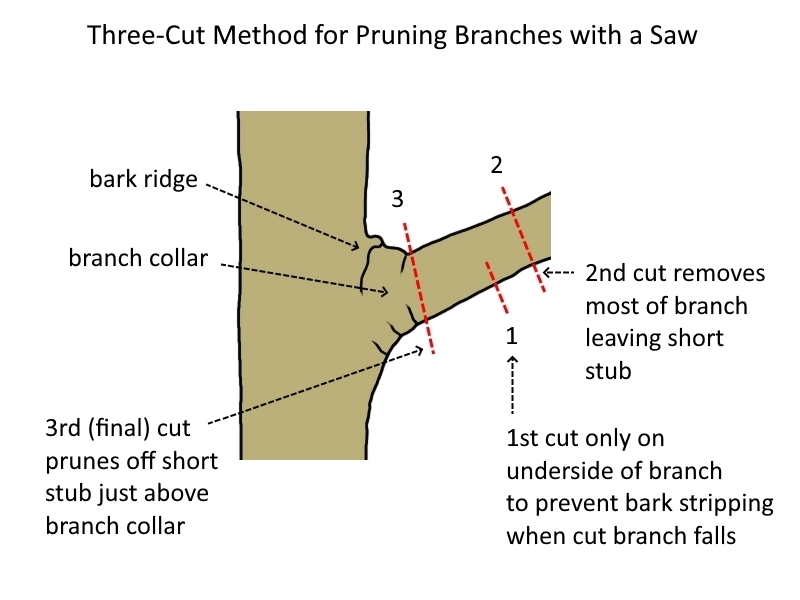
Things to Watch Out For
- Avoid over-pruned or overly shaped branches. In bonsai redbuds or heavily managed ornamentals, the natural growth habit may be distorted.
- Don’t ignore natural structure. Cutting too much may remove terminal buds or signs of a branchy growth pattern, making ID harder.
- Use natural-looking samples when possible. Twigs from the outer canopy often hold the most visible, undisturbed clues.
Conclusion
From branching patterns to bud texture, the small details can tell you a lot. We hope this detailed guide will help you get better at tree identification by buds and branches, especially in winter or early spring. Need help confirming what you see? Snap a photo with the Planteyes app.
FAQs
What’s the difference between opposite and alternate buds?
Opposite buds grow in pairs, directly across from each other on the twig. Alternate buds appear one at a time, switching sides as they go down the branch. This pattern is one of the most reliable clues when identifying trees.
Can pruning or trimming affect identification?
It can, depending on how much is removed. A cleanly cut twig often makes it easier to study bud patterns, but excessive pruning, especially in bonsai or ornamental trees, can distort natural growth and make ID harder.
Is there an app that helps with tree identification by buds and branches?
Yes! The Planteyes app allows you to take a photo of a twig or bud and compare it to its plant database. It’s a helpful tool for confirming your field observations.


